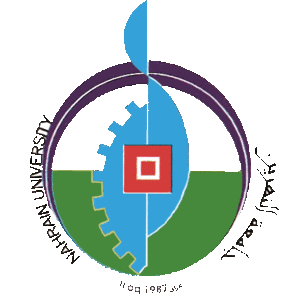In this work Eshidiya Plant industria wastewater, which is one of the phosphat mining industries that located in Jordan, wherapproximately 450000 m3 wastewater monthlyresulted from the flotation cells needs a propertreatment for recycle purposes. The studied wastewater mainly contains phosphate waste andchloride ions. It considers enhancedsedimentation process by dual polyelectrolytesconditioning to remove and dewatering ofphosphate waste, followed by a continuousmixed bed ion exchange column to remove theremaining soluble salt in the supernatant water. The effect of different dose of the binary mixtures of cationic and anionic polyelectrolyteson the flocculation has been studied by measuring the turbidity and zeta potential. Theoptimum dose of the duel polyelectrolyte waobtained that is related to the target zeta potential of -5.6 mV. Flocculation helps toincrease both the settling and dewatering rate ophosphatic waste in order to increase threcycling of the process water. The formecriteria increased 20 times by cationic (Zetag7557) and anionic (Magnafloc 633)polyelectrolyts as compared to the naturalsettling rate of the same waste, as well as 70% decreasing in the waste volume.Batch and continuous fixed-bed column ion exchange study was carried out by using Purolite® A400 and Purolite® MB400 ion exchange resins as an adsorbent for the removal of Cl-, SO4-2 and Na+ from the water. Batch studies were performed to investigate the effects of various experimental parameters, such as adsorbent dose and initial concentration on the removal of ions. The maximum efficiency obtained was 98.95% by using 5g adsorbent and 200 mg/l initial chloride concentration.Adsorption equilibrium data were correlated with Langmuir and Freundlich isotherm models. The column experiments were conducted to study the effect of important parameters such as bed depth, flow rate, feed concentration and the present of the co-ions on breakthrough curve, removal efficiency and the performance of mixed-bed ion exchange. The breakthrough curves of the three ions, plotted as the ratio of effluent to the influent concentration versus run time in minutes, give proper detailed results about the effects of the conditions. A mathematical model that proposed a mixed
diffusion mechanism was developed to simulate the performance of the mixed bed ion exchange.The model was solved by a Matlab program and the theoretical results were compared with the experimental.
TREATMENT OF THE INDUSTRIAL WATER USING ION EXCHANGE
number:
2904
إنجليزية
College:
department:
Degree:
Supervisor:
Prof. Dr. Apreal S. Yaro
year:
2012
